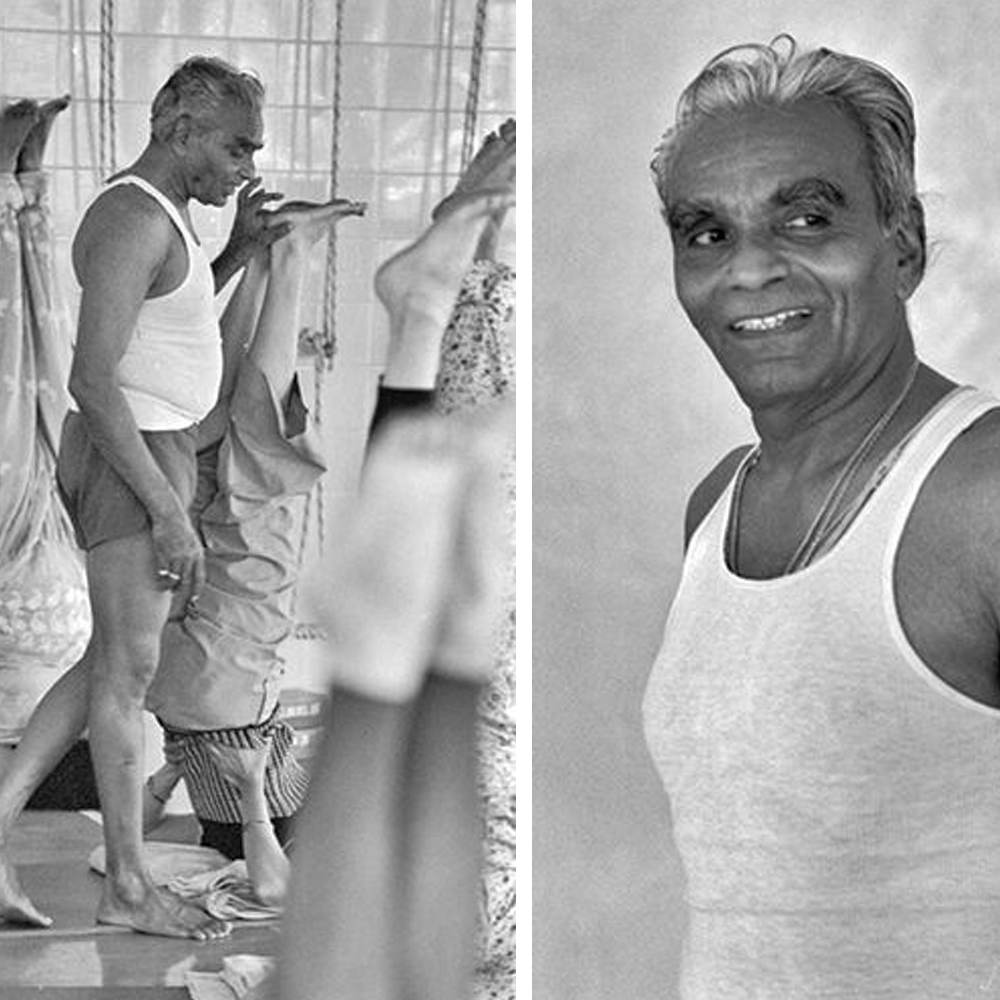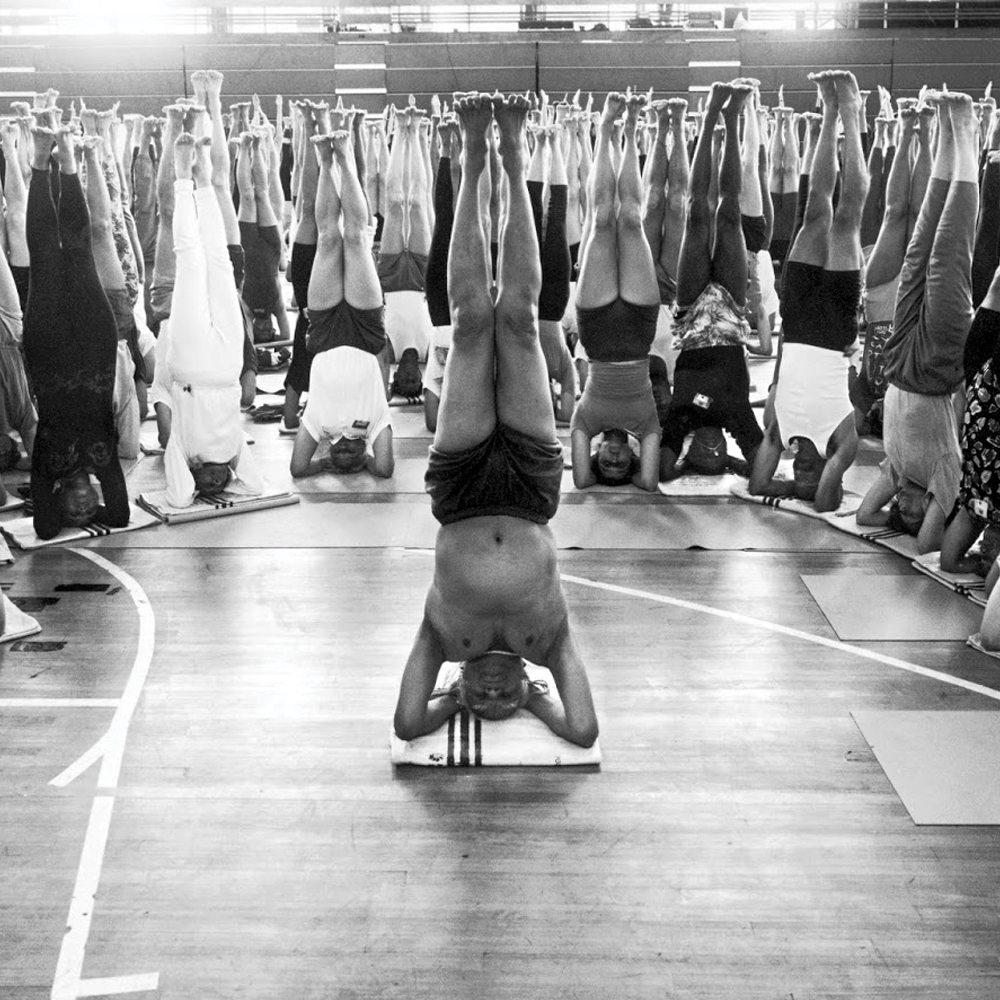1.2 Yogaścittavṛttinirodhaḥ - Patañjali
“Yoga is the cessation of movements in the consciousness”
His practice and understanding shines through the sūtra “Yogaścittavṛttinirodhaḥ”:
Yoga is defined as restraint of fluctuations in the consciousness. It is the art of studying the behavior of consciousness, which has three functions: cognition, conation or volition, and motion. Yoga shows ways of understanding the functioning of the mind, and helps to quieten their movements, leading one towards the undisturbed state of silence which dwells in the very seat of consciousness. Yoga is thus the art and science of mental discipline through which the mind becomes cultured and matured
What is Iyengar Yoga?
Lovingly known as ‘Guruji’ by his disciples, the young B. K. S. Iyengar struggled past the challenges of malaria, tuberculosis, typhoid, and malnutrition through his devotion to yoga under the tutelage of Tirumalai Krishnamacharya who is often referred to as “the father of modern yoga”. His refusal to brand his teaching demonstrates the purity of his belief which is firmly rooted in Patañjali’s eight limbs or stages of Yoga:
Yama: universal moral commandments
Niyama: self-purification by discipline
Asana: posture
Pranayama: rhythmic control of the breath
Pratyahara: withdrawal and emancipation of the mind from the domination of the senses and exterior objects
Dharana: concentration
Dhyana: meditation
Samadhi: a state of super-consciousness brought about by profound meditation
The Iyengar approach to yoga as demonstrated by the Yogacharya himself and each of his trained disciples reflects the ultimate truth about the practice: it is a spiritual path to self-realization and more than just gymnastics or an intimidating display of flexibility.


What Iyengar Yoga Offers
It is sometimes said that the Indian body, Indian muscles or Indian anatomy are different from Western ones, and that yoga is not suitable for the people of the West. But is there a British cancer, an Italian cancer and an Indian cancer, or is cancer one?
He concludes that “diseases are common to all human beings, and yoga is given to cure all those diseases”.
The Iyengar method distinguishes itself from other styles of yoga in technique, sequence, and timing. Infamous for its disciplinarian approach and excessive use of props, Iyengar Yoga makes the benefit of each pose accessible to the practitioner regardless of their level or experience. Over 200 asanas and 14 types of pranayama techniques systematized by Guruji not only enable mastery of physical strength, but also sensitivity of mind and spirit. For instance, the most advanced student lost in thought is unable to maintain balance in Vṛkṣāsana or tree pose.
Sir Yehudi Menuhin, Guriji’s devoted pupil and one of the greatest violinists of the 21st century notes in Light on the Yoga Sūtras of Patañjali that “anyone can practice yoga, and this important contribution to the history of yoga and its validity today is for everyone.” B. K. S. Iyengar’s “genius comes as a great gift of clarity and insight that can only deepen the understanding and support the practice of any keen student”.
